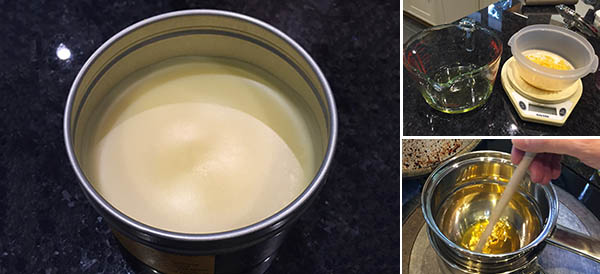
DIY SHTF Healing Salve
When was growing up, my mother and father seemed to have a salve (which we pronounced ‘sav’) for everything. If me and my siblings fell over, a healing salve was applied. If we had a chest infection, my mother would rub a menthol based salve into our chest, that opened up our nasal passages and allowed us to sleep better. Salve was the number one item in our medicine cabinet.
Salves derive from a basic recipe for the base with added ingredients as per the use. From the base you can make a salve for almost any topical medicinal use. This article will show you how to create a salve base and infuse a herbal oil. In this case the salve we will be making is used for cuts and wound healing. The article will also list other potential ingredients for other salves you can make yourself once you master this basic salve recipe.
Preparing an Infused Herbal Oil
Many types of herbs and plants can be used as the active ingredients in a salve. In this recipe I have chosen plants that are good for cuts and small wounds.
The recipe includes the following ingredients:
- Thyme: Thyme contains ‘Thymol’ which is an antiseptic and often used to medicate wounds and bandages to prevent infection.
- Lavender: As well as making the salve smell good, lavender is known to have antimicrobial and anti-inflammatory action.
- Comfrey: This plant, both the root and the leaves and flowers, has been used since ancient times to help wounds to heal. It can help to slow down bleeding and has anti-inflammatory action.
NOTE: never use a salve on a dirty wound, always clean the area thoroughly first.
Preparing the Plants for Salve Use
There are two basic methods for preparing the plant extracts, to create an infused oil, for use in a salve base:
Quick and easy method: Double boiler method of extraction of herb active ingredients into oil
Ingredients:
- Dried Thyme
- Dried Lavender
- Dried Comfrey (use the leaves and flowers from the plants)
- Olive oil or nut oil
- Double boiler
- Something to strain the oil (cheesecloth or similar)

Making the Infused Oil
 Place your mix of dried herbs into the double boiler (as shown above). Cover the herbs with oil so there is about 1 inch of oil covering the top of the herbs. If you shred or grind the herbs up, you’ll increase the surface area and so improve extraction of the active ingredients.
Place your mix of dried herbs into the double boiler (as shown above). Cover the herbs with oil so there is about 1 inch of oil covering the top of the herbs. If you shred or grind the herbs up, you’ll increase the surface area and so improve extraction of the active ingredients.- Using a low heat, warm the oil and herbs for 1-5 hours, until the oil turns the color of the herbs. If you have a ‘warming oven’ (typically used in bread making) you can leave the mix of oil and herbs in a glass proof bowl in that oven for around 48 hours. This will also extract the active ingredients from the plants.
- Strain the oil to remove any plant debris. Be careful as the oil will be hot
- Keep the herb infused oil in a jar in a cool place ready for salve making
NOTE: If you don’t have a double boiler you can instead use a heat proof glass bowl on a pan of water – be careful not to overfill the pan as the water, when boiling makes the glass bowl ‘jump’.
Slow Method:
Collected herbs in jar – using in-direct sunlight to extract the active ingredient into oil
Ingredients:
- Dried Thyme
- Dried Lavender
- Dried Comfrey (use the leaves and flowers from the plants)
- Olive oil or nut oil
- Jar with tight lid
- Something to strain the oil (cheesecloth or similar)
- Some sunshine
Making the Infused Oil
- Place the dried herbs, either chopped or loosely shredded into the jar
- Pour the oil over the herbs covering them
- Leave in in-direct sunlight for around 3-4 weeks
- Every day give the jar a shake or two
- Once the oil starts to take on the color of the herbs and smells of lavender and thyme, it is time to strain

- Strain the oil through cloth to remove the plant debris and leave clear oil
- Using the cloth, strain the oil until the plant debris is removed
How to Make a Salve Base
The salve base is the medium that holds the active ingredients. This is also the method used to distribute and absorb those active ingredients onto, and to an extent, through, your skin. The salve is based on beeswax but you can also use other safe waxes such as Carnauba wax (palm wax).
Ingredients
- 4 oz of a herbal infused oil such as that described in the section “Preparing the Plants for Salve Use”
- 1/2 – 1 oz beeswax pellets (amount depends on how thick you want the salve to be)
- 10-20 drops of essential oils such as Tea Tree or lavender (optional)
- Double boiler (you can use a commercial one, or a make-shift one as I have done below)
- Some tins or small glass jars to hold the salve
Making the Salve Base Using the Infused Herbal Oil
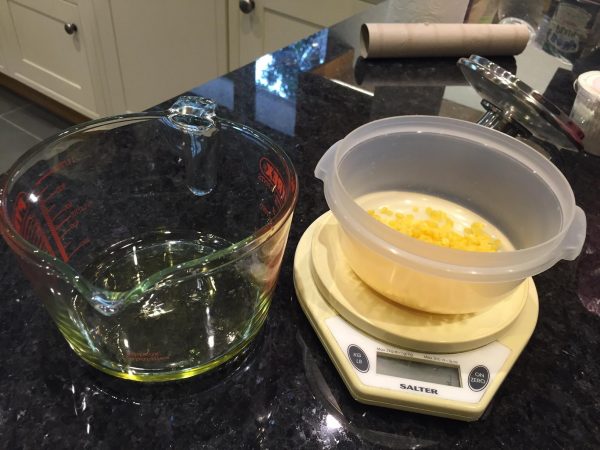 4 oz infused oil ready: 1 oz beeswax pellets
4 oz infused oil ready: 1 oz beeswax pellets
- Place the beeswax pellets into the double boiler. Alternatively, use a heat proof glass bowl over a pan which contains water, in the same method you would use to melt chocolate. Be careful not to overfill with water as it will make the glass bowl ‘jump’.

- Add the infused herbal oil to the softened beeswax and slowly heat and mix. You might find the wax starts to thicken when you add the cold oil, let it heat up and mix in the warmed oil/wax. Mix the melting beeswax using the handle of a wooden spoon or similar. Once the beeswax is completely melted, slowly add the infused oil to the melted wax in the double boiler. Mix as you pour. You’ll notice the wax starting to solidify as the colder oil hits it. Continue to heat and stir until the wax re-melts. Stir the two until completely mixed.

- Once thoroughly mixed, remove from the heat
- Allow to cool and then add in the essential oils (if using) and mix. I used a few drops of lavender oil in my mix at this stage
- Pour the cooled, but still soft, salve into your containers. Use a clean tin or glass jar.

- Leave for about 15 minutes in a fridge or very cold place to harden the wax
- Use you salve on the clean cut or wound or to add to bandages

Other herbal / plant mixtures that can be used in salves:
- Menthol and peppermint: This combo is perfect for rubbing onto chests at night before sleep to help ease the symptoms of a cold or chest infection.
- Elderflower, Aloe, Lavender: Used in a salve for soothing sunburn.
- Calendula infused in coconut oil: Perfect for relieving eczema.
- Honey (preferably Manuka) used with coconut oil in the salve: For soothing burns
Potassium Permanganate: Why You Need It in Your Survival Kit?
The 10 Medicinal Seeds You Should Plant for a Complete Backyard Pharmacy (Video)








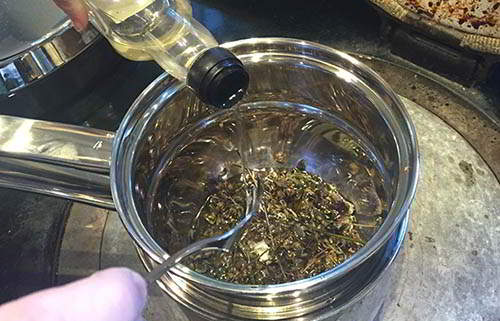
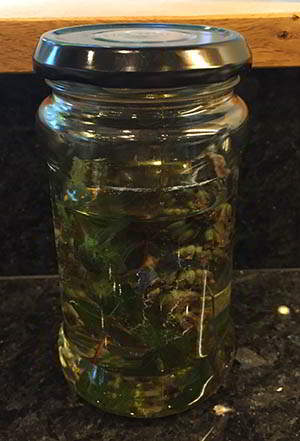 Place your mix of dried herbs into the double boiler (as shown above). Cover the herbs with oil so there is about 1 inch of oil covering the top of the herbs. If you shred or grind the herbs up, you’ll increase the surface area and so improve extraction of the active ingredients.
Place your mix of dried herbs into the double boiler (as shown above). Cover the herbs with oil so there is about 1 inch of oil covering the top of the herbs. If you shred or grind the herbs up, you’ll increase the surface area and so improve extraction of the active ingredients.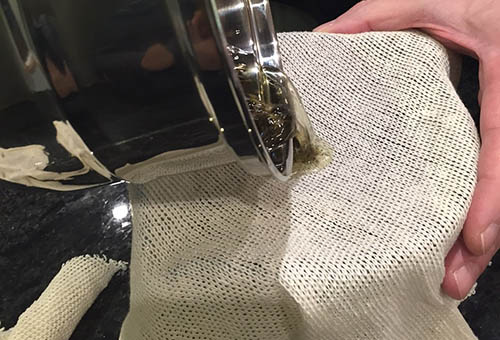
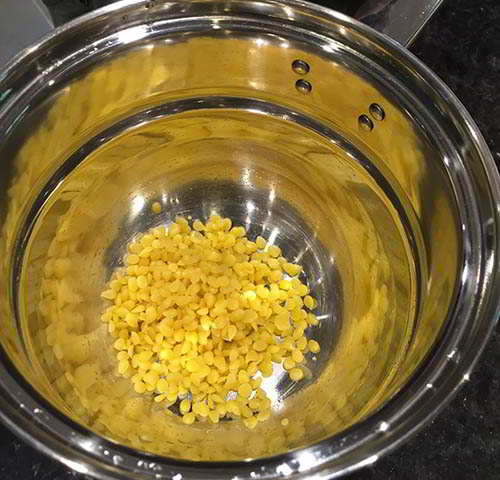
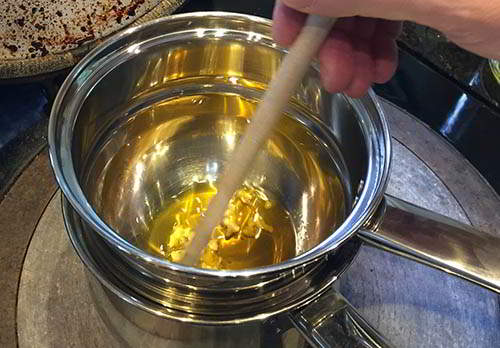
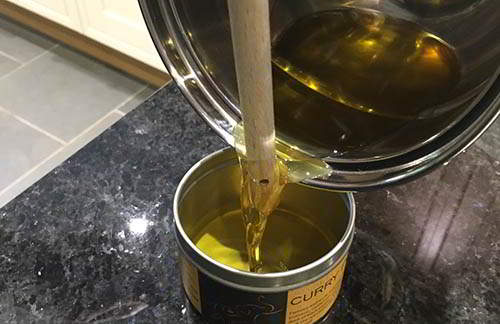
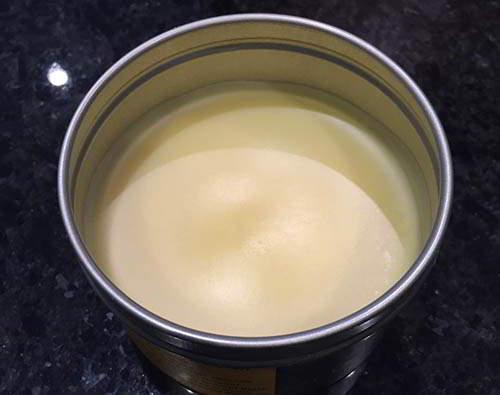
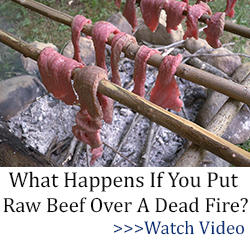
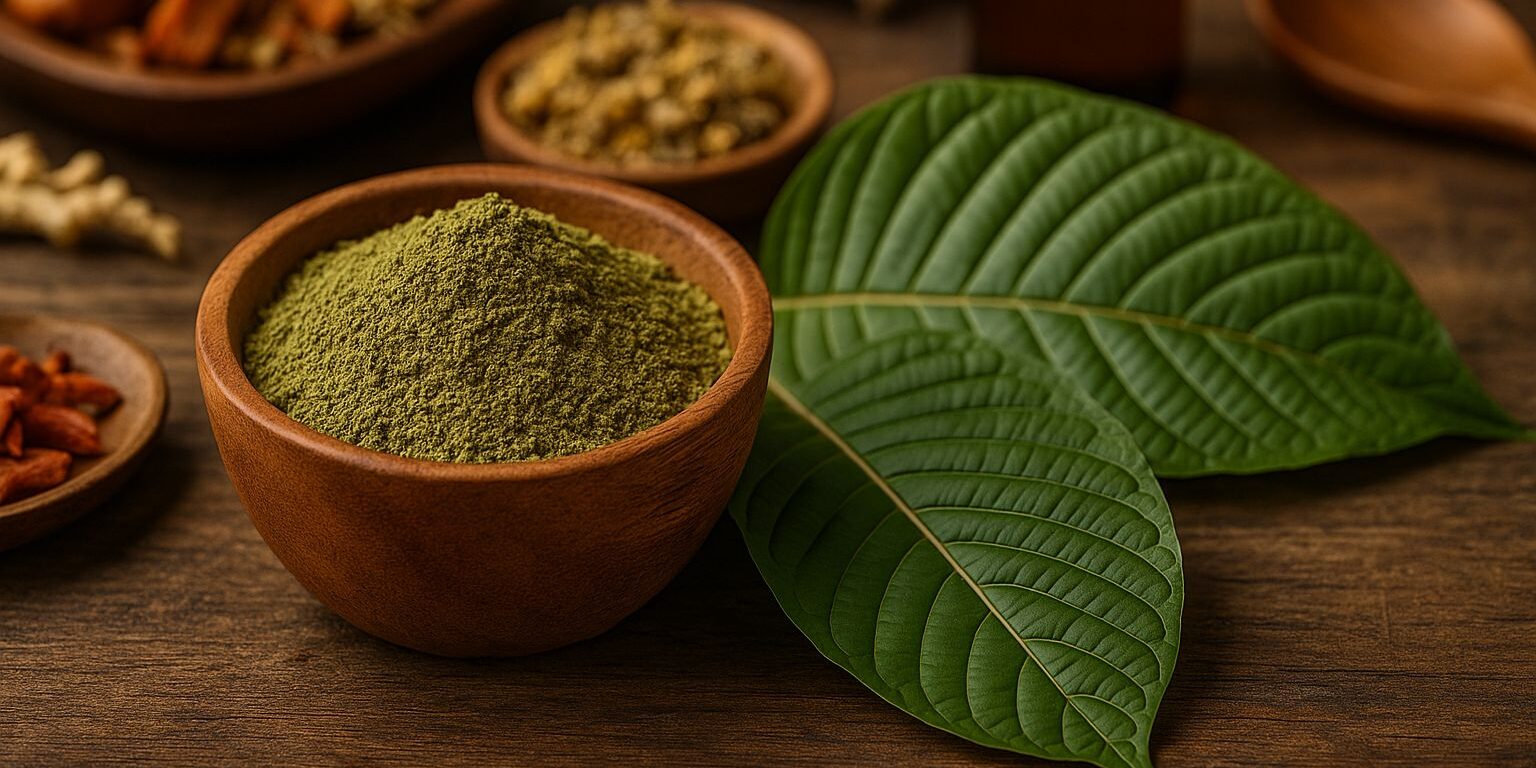
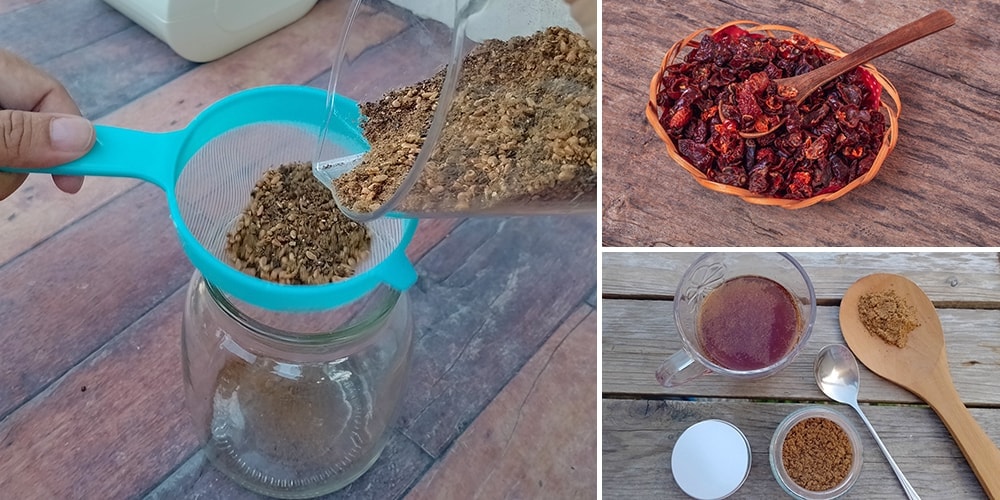
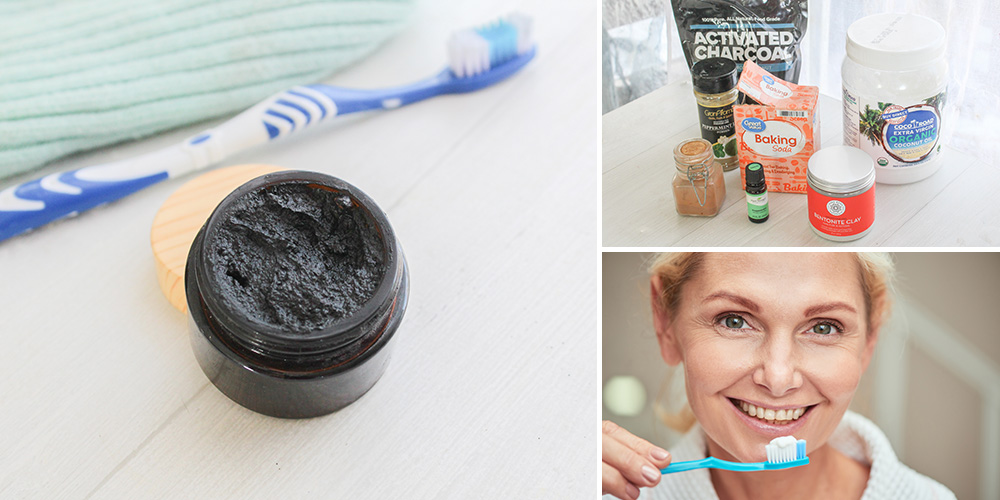
I love this web site, thank you so much for letting me know about it. I have been making all natural skin care products for a few years now and salve is what everyone loves the most. My little grandson calls it “Nana’s Salve.” I can’t wait to try your recipe with the infused herbs.
Hi Marsha,
Thank you so much for your kind words. We are really glad you find the articles useful. Nana’s Salve sounds wonderful.
God bless!
Thank you for leading me here, it shall be a regular in my visiting habits
Hi Marissa,
Thank you so much for your kind words. The website is new so please send us your feedback. We want to make it as useful as possible.
God bless!
For Calendula do you use the flowers or the leaves or both?
Hi Suzanka,
We use only flowers, the petals to be more exact.
We can send you our recipe if you are interested.
God bless!
How is it a “Recipe” when you don’t include any quantities for the ingredients! As I don’t have experience making these things, it is useless. stuff like this is why I was so disappointed in the first book you wrote in your “Lost” series.
The quantities are at the beginning of the recipe. Shows the ingredients and measurements. Not sure why you think all this wonderful information is useless.
I looked several times from start to finish. There are no quantity measurements recorded for how much or ratios of each herb to use in the total infusion only how much oil to use in coverong. Please include ratios or measurements so the final infusion is not too weak or too concentrated. Thank you.
The salve recipe has measurements but the infused oil doesn’t. It just lists the herbs to use.
Everything is there if you look
Hi Mark,
Thank you for your feedback! You can put equal parts of the herbs or you can add more of one plant depending on the effect you would like to achieve. For example, in order to prevent infection, you can put more thyme, for an anti-microbial or anti-inflammatory action you should put more lavender. Regarding oil, depends on the jar you are using, but as a general rule, you should cover the herbs with oil.
God bless!
Please send me your recipe using Calendula plant for eczema. Thank you.
Just wanted to know if this is a “Real Book” or is this a Web site Id need to sit at my computer of extended amount of time to find and read what it is Im needing to know at the time. So many of these offers appear so good until you find out they send you a Web Connection and you have to read it from a computer. I have a bad back and my eye site is strained, how then can I sit for an extended amount of time. Searching and reading on the computer.
I would love all the information. But I am old Fashioned and PREFER a Good Ole’ Book to snuggle up with in my Chair with a highlighter and absorb all the information I seek.
Hi Lynda,
Thank you so much for your comment. This is a website dedicated to herbal remedies, but if you want to purchase a book this subject, please check the link below:
https://www.thelostremedies.com/book/
God bless!
I received the book and upon first opening it, I couldn’t put it down for 20 minutes! It was simple and enjoyable to read. Can’t wait until I have time to really sit and dig into it! I have so many of these plants around my house and so many ailments in the family that I can’t wait to try these on 🙂
I am loving everything about this website. I used to do living history lessons when I worked at a environmental school and I always played the roll of medicine woman/midwife. I enjoyed researching different remedies for different ailments. That was about 23 years ago! It feels so good to get back into this. Thank you so much!
Hi Carolyn,
Thank you for sharing this with us and for your feedback. We really appreciate it
God bless
I would love to make this, but apparently comfrey is illegal in the USA. Suggestions?
I grow my own comfrey. It is a spectacular “ornamental” plant.
What you are referring to is comfrey in oral supplements … you can grow comfrey and use as you wish … additionally, it is one of the best composting plants, next to nettles, that you can use in your garden …
From what I learned at Back to Eden is that comfrey is best grown in a container or some such manner that contains it, so the roots don’t grow into you whole garden & yard. In other words I understood that it is an invasive plant, though a useful one.
Can you explain what the “SHTF” in SHTF Healing Salve means? Thanks.
Hi Susan,
SHTF stands for sh*t/stuff hits the fan. It is basically any event that turns your world upside down.
Like pandemics, wars, serious natural disasters.
God bless!
LOL. Oh. Got it. Thanks.
Hi, Claude! I LOVE your, and Nicole’s books! Thank you for all the info! In the above article, I still can’t find “amounts”, other than “equal parts”… can you be a bit more specific… ie: 1-2 oz, etc. ? Thank you, and many blessings to you and on all you do! ~Reni
Hi Reni,
Thank you for your comment.
The ingredients used and the amounts are:
4 oz of a herbal infused oil such as that described in the section “Preparing the Plants for Salve Use”
1/2 – 1 oz beeswax pellets (amount depends on how thick you want the salve to be)
10-20 drops of essential oils such as Tea Tree or lavender (optional)
Some tins or small glass jars to hold the salve.
God bless!
Awesome post as always. But can I tell me what Shtf is?
Hi Charlene,
SHTF stands for sh*t/stuff hits the fan. It is basically any event that turns your world upside down.
Like pandemics, wars, serious natural disasters.
Many blessings and good health!
[Please let the author of this site authorize this post]
I used this Herbal remedy for Herpes simplex and was cured – Excellent 5/5. contact rob insonbuck ler (@) yahoo……com………………..♥️♥️♥️♥️♥️♥️♥️
… apparently … Honey, particularly Manukau honey by itself is an amazing topical for not just burns, but open flesh wounds and infections … I think using it with the addition of thyme or oregano or other antibacterial/anti inflammatory substances would be a plus …
I think the problem comes from the authors assuming that everyone is familiar with certain acronyms, certain methods of preparing herbal medicines.
Not everyone who comes to blogs is ‘educated’ in all of the material found in the blog posts, and writers should know this and write accordingly.
Plainly said: writers should write as if NO ONE is familiar with what they are doing, and give specific, detailed instructions on how to do it, and if an acronym is used,(SHTF, TEOTWAWKI, ACV or OACV etc.) they should explain that, too. (TEOTWAWKI: The end of the world as we know it, ACV or OACV: organic apple cider Vinegar). Maybe have a list at the top of each article with the most used acronyms.
Also, using American standard measurements, (as this is a post in the USA), and NOT mixing metric and standard in the same recipe! and using Latin name of plants as there are often several with similar or same name/nickname.
If all bloggers would do this, there would be very few questions asked that, although may be known to some readers, may not be known to all.
SHTF was one thing I knew immediately and had a good laugh.
[…] DIY SHTF Healing Salve […]